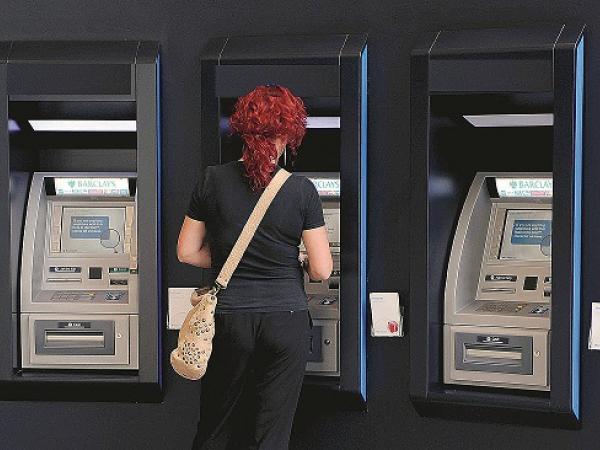Latin American banks reported Total deposits of US$2.51 trillion at the end of 2023, a figure 13.6% higher than that reported a year ago (equivalent to US$300,000 million) and 40% higher than that reported in 2019 (US$714,600 million), according to the Latin American Federation of Banks, Felaban.
Read: Real-time payments will financially include 5.1 million Colombians in 2028
Brazil ranked first with deposits of $1.08 trillion, followed by Mexico with US$462,672 million, Chile with US$220,226 million and Colombia with US$166,167 million.
Next came Panama with $92,249 million, Peru with US$90,345 million, the Dominican Republic with US$90,345 million and Argentina with US$75,864 million.
On this occasion, 79% of said balance of deposits at the end of 2023 is explained by five countries: Brazil, Mexico, Chile, Colombia and Panama, a country that is making notable progress on this front. In fact, Honduras, Guatemala, Panama and Bolivia report triple-digit growth with respect to total deposits registered a decade ago (158%, 149%, 135% and 101%, respectively), while the other countries report a variation average of 49% in the same period, said the Felaban report.
With respect to credit placement, the balance of the current portfolio reported by Latin American banks amounted to US$2.5 trillion at the end of 2023, a figure 13.5% higher than that reported a year ago (an absolute variation of US$297,758 million) and 30 % higher than that reported in 2019equivalent to an increase close to US$580,406 million, according to the report.
Brazil, with US$1.19 trillion, was placed in first place, followed by Mexico with US$402,143 million, Chile with US$278,365 million and Colombia with US$160,040 million.
Credit card
iStock
On this occasion, five countries explain 85.3% of the Latin American bank portfolio balance: Brazil, Mexico, Chile, Colombia and Peru. In individual terms, Mexico and Panama increased their participation
relative in the total portfolio balance: in the Mexican case, 4.7% (going from 11.4% in 2013 to 16.1% in 2023) and, in the Panamanian case, 1.4% (from 1.8% in 2013 to 3.2% in 2023 ), while Brazil reported
a decrease of almost 9% in its relative participation in the total portfolio (from 56.8% in 2013 to 47.9% in 2023).
Read: Five out of 10 Colombians do not like their financial situation
In relation to Deposits/GDP indicator, Brazil, Ecuador and Panama reported variations of more than 1,000 basis points in this indicator in the last five years while, in the short term, 8 countries (Bolivia, Chile, Costa Rica, Guatemala, Mexico, Panama, Peru and Uruguay) reported a slight decrease between 2022 and 2023 – which in all cases were on average less than 3%. On the other hand, the banking sectors of Ecuador and Panama reported the largest increases in the Credit/GDP ratio in the last ten years (1,000 basis points and 1,300 basis points, respectively) while, in the last year, eight countries (Argentina, Bolivia, Brazil, Chile, Colombia, Costa Rica, Panama and Peru) reported an average interannual decrease of 2% in this indicator.
The balance of bank deposits per inhabitant in Latin America reached US$4,231 at the end of 2023, while the balance of credit per capita was US$4,217 in the same period. Both indicators
reported double-digit interannual variations in 2023 (18% in both cases), and complete a sustained upward trend since the pre-pandemic.
When disaggregating these figures by country, Panama stands out for its deposit and portfolio levels adjusted by population size that almost quadruple the Latin American average – which was US$5,537 and
US$4,900, respectively, at the end of 2023. With the exception of Argentina (for exchange reasons), all countries reported positive variations in this indicator in the last decade that averaged 63% while, in the case of the Credit per capita indicator, said variation between 2013 and 2023 averaged 65%.
In Colombia the figure was US$3,241, Felaban said in his report.
For its part, the number of personnel employed by the banking sector averaged 340 employees per 100,000 adult inhabitants in Latin America at the end of 2023, an indicator that remained stable in relation to the previous year’s record and that, at the same time, consolidates a stable trend in recent years, after the marked downward trend observed since 2015 (and even despite the absence of information from Brazil since 2018).
Colombia registered a figure of 355 bank employees per 100,000 inhabitants, Felaban mentions in the report.

Bank of Bogotá Office.
Private file
Latin American banking reported the existence and operation of 66,448 bank branches at the end of 2023, a figure slightly higher than that reported a year ago (1.2% higher, equivalent to 756 additional bank branches). Over the last decade, a relatively stable trend seems to have been consolidated in this indicator, and suggests that an expansion in this service channel looks increasingly less likely in the near future.
According to Felaban, Colombia had 5,652 bank branches in 2018 and increased to 4,978 offices in 2023.
On the other hand, the number of ATMs (Automated Teller Machines, or cash dispensing machines) remained technically stable in the last year, as the entry into operation of only 646 ATMs at the regional level was reported (equivalent to a variation of 0.2% ).
Colombia had 16,192 ATMs in 2018 and 16,008 in 2023, Felaban said.
Felaban said that the journey towards effective financial inclusion has a long journey, especially for emerging countries. Countries with middle income, with financial systems in states of medium development, with low financial depth and with institutional development that still needs to advance deeply to generate economic stability.

Debt with the Bank
Source: IStock
Within the study of financial inclusion, there are many works that talk about the obstacles faced by the process of expanding the coverage of financial services for more groups of the population.
From structural economic factors such as poverty and informality, to idiosyncratic, cultural and religious factors, they have been documented by experts, academics and multilateral entities.
Felaban says that more financial education for the public is necessary to avoid phenomena of over-indebtedness or excessive spending. The second has to do with the lines of action and prevention for issues related to fraud.
Read: Colombia shows slow improvement in financial inclusion, according to Credicorp study
















